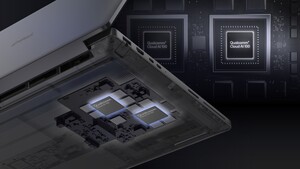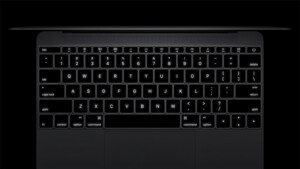First, to understand the relationship between USB-C/DP/PD and Thunderbolt, check out
this diagram.
Essential to your question: some Thunderbolt docks
have a USB-C/DP fallback mode but
most have not.
To maximize your compatibility with a wide array of laptops, we recommend to get a USB-C/DP/MST dock that does not have Thunderbolt support. Such as
this one.
Such a dock will only have 10 Gbit/s data which is less than Thunderbolt's 40 Gbit/s, but it will be sufficient for most use cases.
If you want to maximize the bandwidth on your Thunderbolt-enabled laptop by using a Thunderbolt dock, I don't have a comprehensive list on which docks have a non-Thunderbolt USB-C/DP/MST fallback mode and which don't. I assume that only a minority of Thunderbolt docks have such a fallback.
If you're not sure whether or not you really need Thunderbolt, check out this machine translation of a German article I wrote:
For which application do I need a Thunderbolt dock?
Only for certain extreme cases, namely:
1) Operation of an external graphics card.
Every Thunderbolt dock has a Thunderbolt output in addition to the input (the connection to the laptop). One could then connect further Thunderbolt peripherals there. External graphics cards (eGPUs) will always necessarily require Thunderbolt. Such solutions are basically the most extreme scenario you can expose the Thunderbolt port to. The question is whether you really want to put such an eGPU
behind a dock. Most eGPU cases contain additional USB ports themselves and the display outputs are then in the graphics card itself. If you get an eGPU, the existing dock is actually obsolete - so this scenario does play a role in the choice of laptop (the laptop has to have Thunderbolt to run an eGPU one day), but not in the choice of dock.
2) Use extremely fast SSDs or external RAID 0/5/10 enclosures.
If you work in an environment where you shovel tons of data from your laptop to a storage system on a daily basis, the use of a Thunderbolt dock is highly recommended. Typical examples are professional video editing (4K RAW), data science and other scientific applications. Basically, you just have to estimate how much bandwidth you need.
A few examples:* 8 bits are 1 byte* An external SSD via USB 3.0 ("Gen1") offers 5 Gbit/s, i.e. 625 MB/s.* A USB-C port with "Gen2" data offers 10 Gbit/s, i.e. 1.25 GB/s* Thunderbolt 3 and 4 are at 40 Gbit/s, i.e. a maximum of 5 GB/s * The sequential read speed of new types of SSDs with PCI-Express 4.0 connectivity is around 5~7 GB/s
5 gigabytes per second, which is like reading a complete DVD (4.7GB) every second. For most users, these are unimaginable speeds. So if you're unsure whether you need a Thunderbolt dock, you probably don't ;-)
3) Extremely wide multi-tasking with lots of simultaneous input/output.
Another case would be the use of very many simultaneously connected storage devices. So if you read from external storage devices, write to other external storage devices at the same time, want to connect them all to your dock (instead of directly to your laptop), pull your data from a network server via Gigabit LAN and simultaneously run an audio-video conference via a full HD webcam on the dock while listening to music, you will probably also soon reach the 10 Gbit/s limit of USB 3.1 Gen2. This then manifests itself in reduced read/write rates and possibly in mouse, audio and video dropouts.
This does not have to be the case! It's better to have a large/fast SSD directly in the laptop and a sensible offline backup solution externally, instead of permanently opening the live project data externally and thus using up the bandwidth. If you still want to be prepared for such extreme cases, go for Thunderbolt.
// Tom
 1x USB-C 3.2 Gen 2 (unterstützt Datenübertragung, Power Delivery und DisplayPort™))
1x USB-C 3.2 Gen 2 (unterstützt Datenübertragung, Power Delivery und DisplayPort™))


